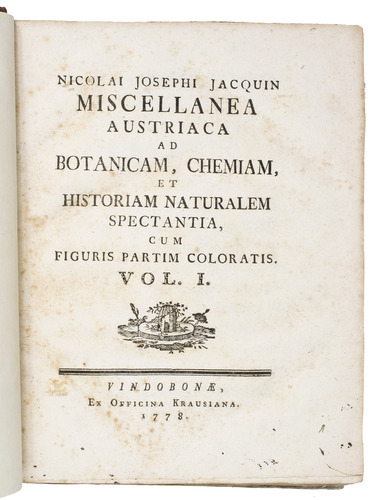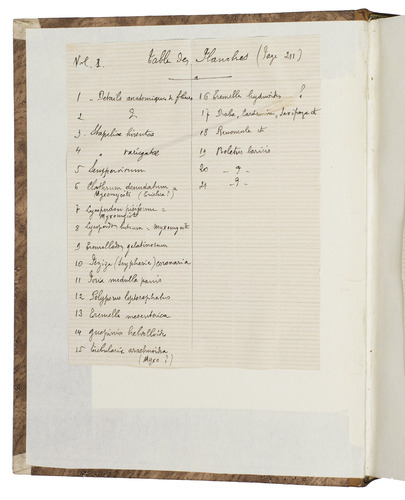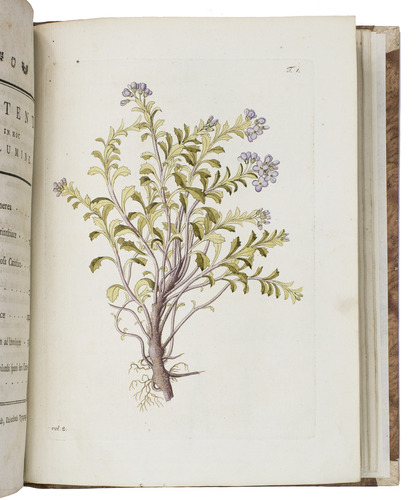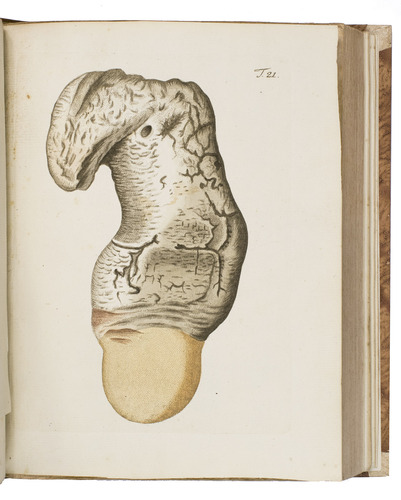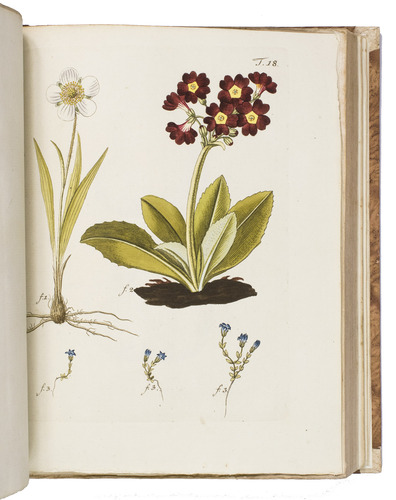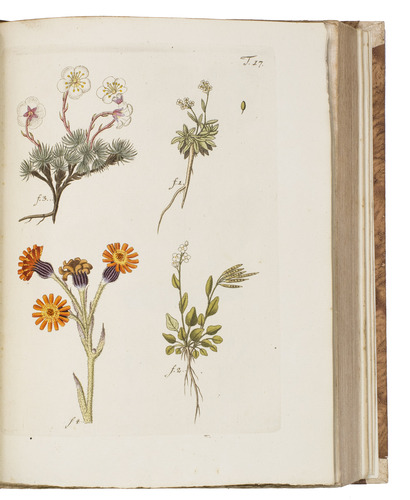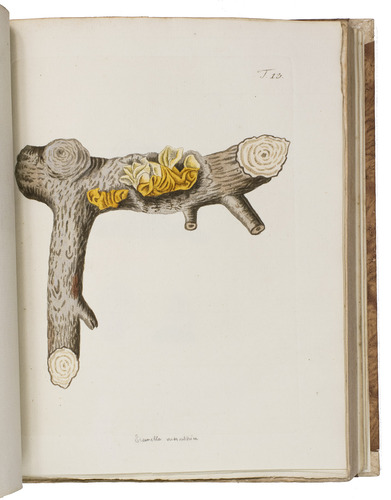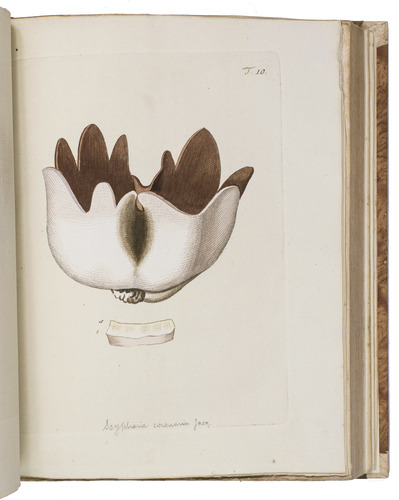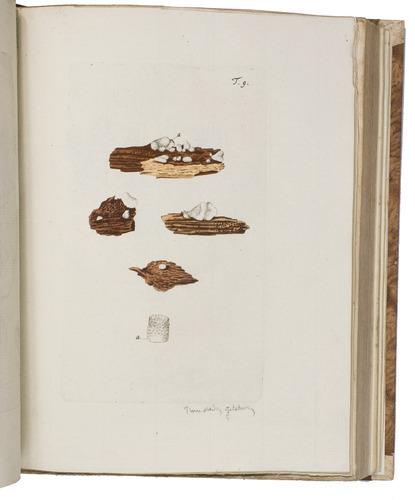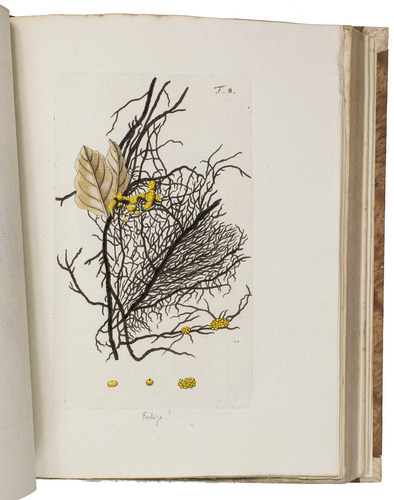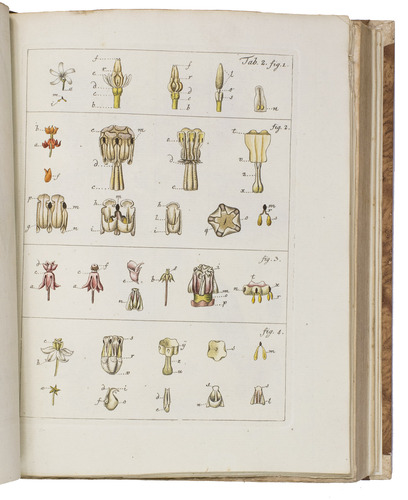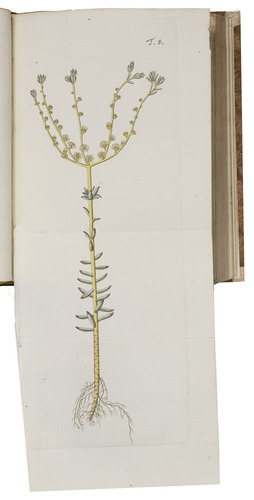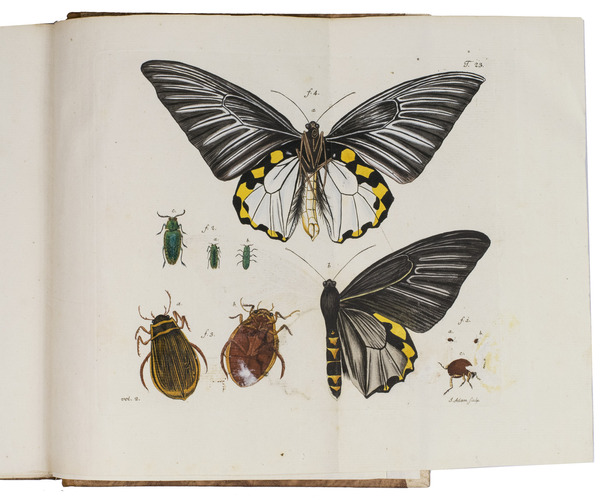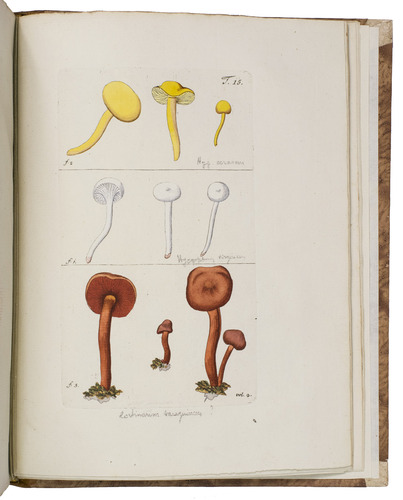[JACQUIN, Nikolaus Joseph von; Joachim Friedrich Plappart; Joseph Sonnauer].
Miscellanea Austriaca ad botanicam, chemiam, et historiam naturalem spectantia, cum figuris partim coloratis.
Vienna, ex officina Krausiana, 1778-1781. 2 volumes bound as 1. 4to. With 44 contemporary hand coloured, full-page copper-engraved plates of flowering plants, fungi and lichen. All plates are numbered and a few are signed ("J. Adam sculp."). Later gold-tooled quarter mottled calf. [4], 212; 423, [1] pp.
€ 2,750
First edition of a beautiful botanical work on Austrian plants and fungi by the "Linnaeus of Austria" (Rowley, 1984), complete with the vividly handcoloured and highly detailed plates. The present copy contains both volumes. The first volume focusses primarily on succulents, while the second volume describes trees, perennials and fungi. The plates, which were likely all drawn by the Viennese artist Jakob Adam (1748-1811), show both the complete plants and dissections of them in great detail. According to Hunt, some of them even present new species for the first time.
The present work consists of 4 articles written by botanists Nikolaus Joseph von Jacquin (1727-1817), Joachim Friedrich Plappart (1751-1865) and Joseph Sonnauer (dates unknown). Of particular interest is Jacquin's article on the reproductive parts of Stapeliads. The plant has intricate star-shaped flowers with unusual reproductive parts that have intrigued botanists for centuries. During Jacquin's time, Stapelieae had already been studied, but a few new species had been discovered in the 1770s, which sparked Jacquin's lifelong interest. He successfully managed to grow and flower 60 specimens in Vienna, a serious feat on its own, which allowed him to study them closely. His work on Stapelieae was pioneering.
Jacquin was made director of the Botanical Garden of the University of Vienna and later also of the Imperial (Botanical) Gardens of Schönbrunn Palace. Under his management, the Palace garden became one of the most celebrated in history. He also travelled the world to collect specimens, but unfortunately lost many of them due to the hardships of travelling at sea, so he began to draw them. He was a great artist and his detailed drawings of the new plants he encountered are some of his greatest contributions to his field. The illustrated works he published are among the most beautiful botanical works from his time.
With two manuscript tables of contents for the plates mounted on the front endpapers, and small annotations in pencil in the lower margins of the plates, with the Latin name of the depicted plant or fungus. Except for the plates, which are in excellent condition, the work is slightly browned throughout, many of the leaves are slightly foxed in the margins, plate 20 of volume 1 has a small tear in the inner margin, without affecting the image. Otherwise in very good condition. Hunt 655; Nissen, BBI, 975; Pritzel 4367; Sitwell, S., Great flower books, 1700-1900, p. 104; cf. Rowley, G. D., Jacquin and the Stapelieae. In: Bradleya, 1984, vol. 2, pp. 1-8.
Related Subjects:



















